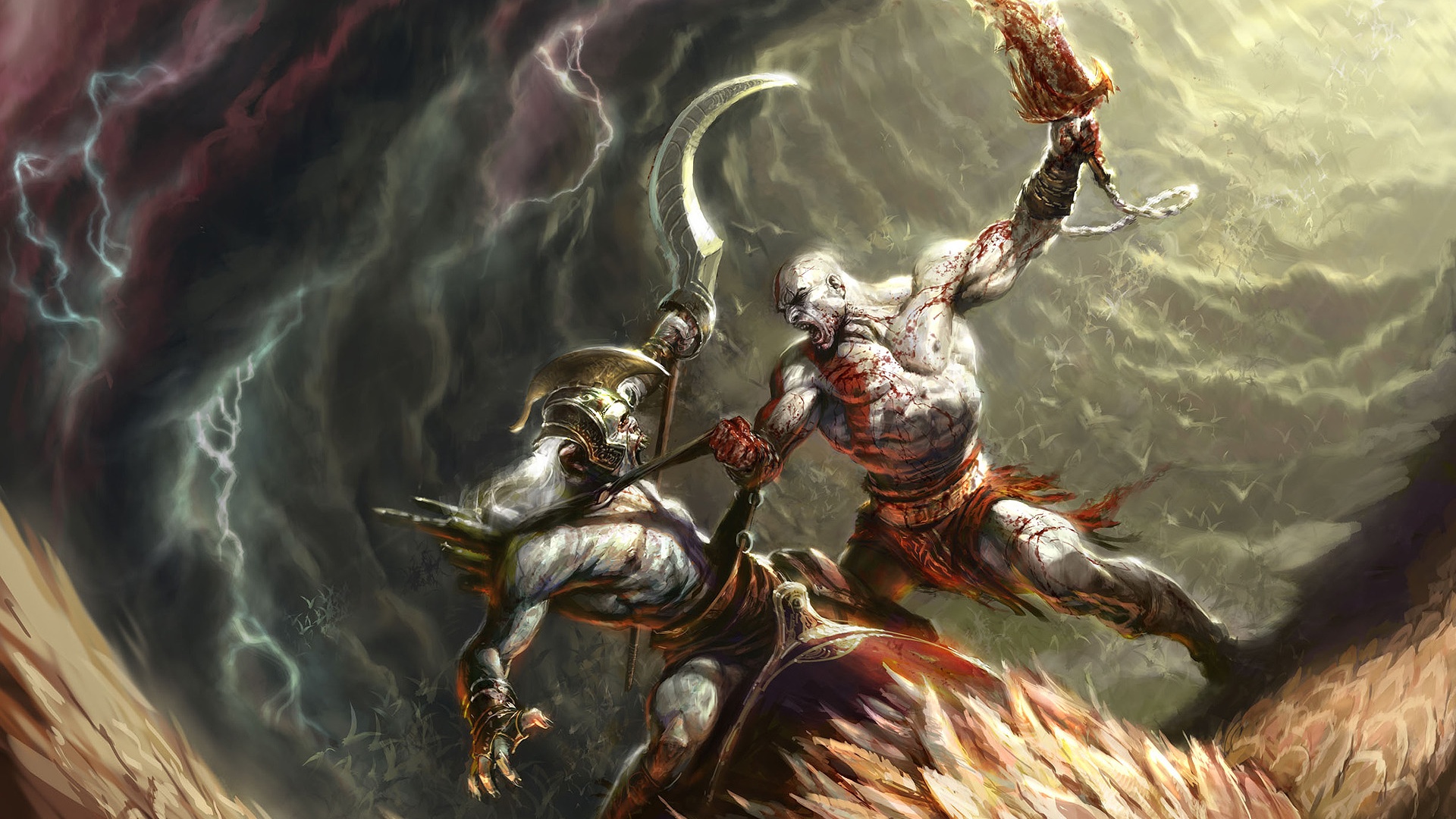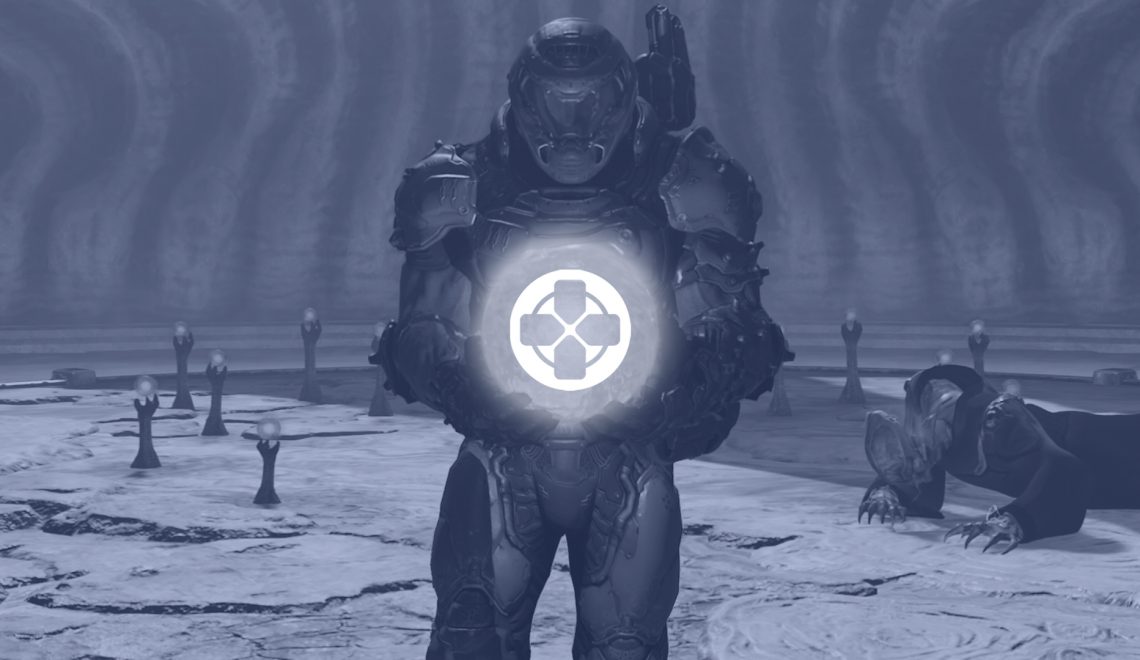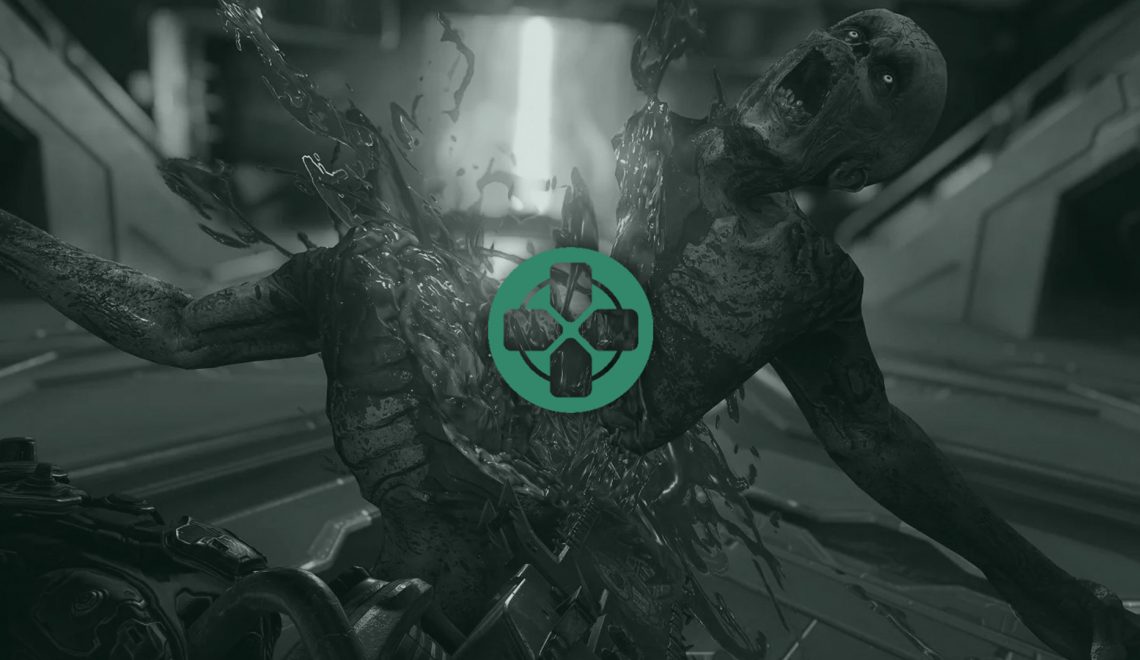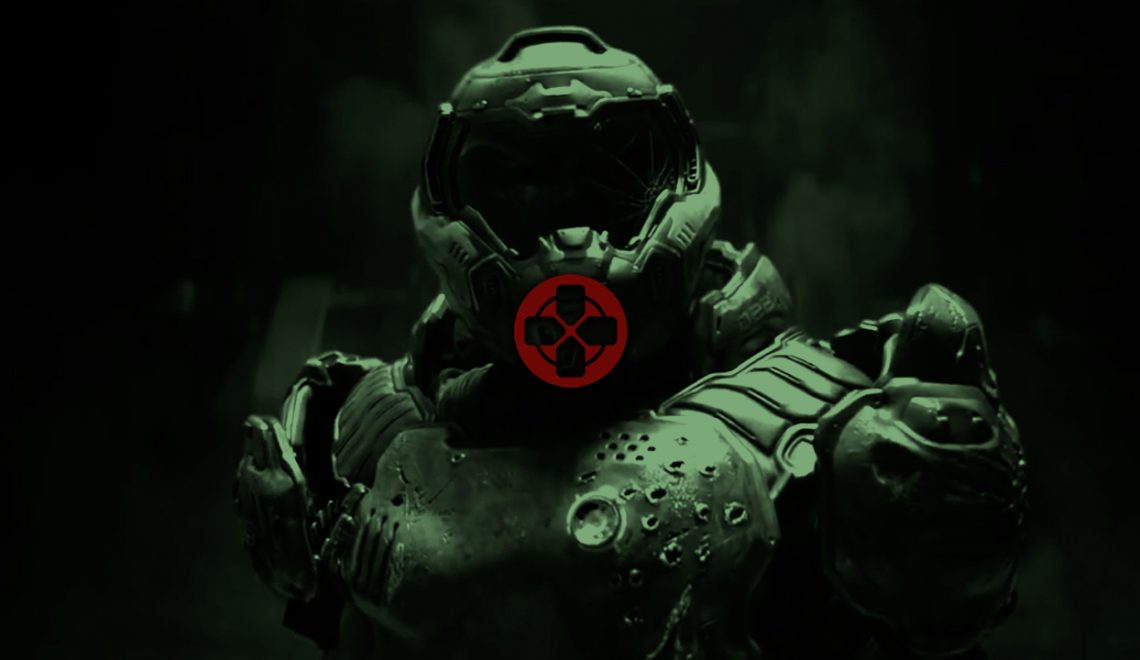People can’t make up their minds about sequels. We ask for change, but when we end up with Linkin Park’s later albums, Resident Evil 6, or Star Wars: The Last Jedi, the end products are too foreign to their own detriment. Creators will alienate their fanbases if they don’t build upon what they’re recognized for, even though clever experimentation and the bravery to uproot expectations should be commended if done well. On the other hand, Nickelback albums, Call of Duty, Power Rangers episodes – these blend together and feel formulaic. You’ll see obvious permutations on their established schticks, but they’re safe and incremental, making newer projects feel like the same, old thing with a fresh coat of paint.
That’s why innovation is a dangerous game to play. So few developers can strike that balance of familiarity and evolution to respectfully advance a franchise forward. Look at Resident Evil 7, Titanfall II, Metal Gear Solid V: The Phantom Pain, The Legend of Zelda: The Wind Waker, Metroid Prime, and Watch Dogs 2. They’re phenomenal examples of how to do it well, but that’s not to say smaller strides are unwelcome for some follow-ups. Why drastically change what’s already good too soon? All of the aforementioned titles pushed boundaries because they had rocky starts or faced stagnation as long-lasting series, so when the wave’s perfect from the get-go, a developer should keep riding it until it starts settling down. That’s exactly the position God of War II was poised to take advantage of.
Analyze
God of War’s creator David Jaffe left a vacuum at Santa Monica Studios when he returned to Incognito Entertainment. Considering the stress that being a director had put him under, he thought it best to move on by leading the development of Calling All Cars!: a small, cartoony game that tapped into his comfort zone with car combat gameplay. He still served in a creative role for Santa Monica with the sequel, but it was lead animator Cory Barlog who took the throne as the new director. Head of studio Shannon Studstill approached him right before God of War’s release because Jaffe kept bringing his name up as a replacement. Barlog thought it was a joke. He’d originally come to the studio from working on lesser-known games like Requiem: Avenging Angel, Secret Agent Barbie: Royal Jewels Mission, and Backyard Wrestling, and when he saw the shambles God of War was in early on, he didn’t take the job seriously. “But then,” he said, “once I got really into it and started animating Kratos, I said, ‘No, this game could be amazing. This game could be great.’ Then I just threw myself into it like crazy.” His willingness to go above and beyond his position by contributing ideas to the story and design throughout development made him an obvious choice for director. Even if he took the job with cautionary enthusiasm.

Barlog penned initial drafts for the setting that proved too ambitious, such as a Wind Waker-style game where Kratos would sail to multiple Grecian islands. He eventually dialed it down by treating the sequel as an immediate continuation of the first game. So much so that Jaffe mentioned how the team wanted to call the game by the same name since they viewed Kratos’ story as one epic. Barlog compares that outlook to what someone’s expectations would be for Lord of the Ring’s The Two Towers after watching The Fellowship of the Ring. “There are some who expect every game to make a dramatic change the way that Resident Evil 4 did over its predecessors. And for that series I think the change was fantastic and completely necessary. I honestly think it should have happened much sooner than it did. But that kind of change is not necessary for every game,” he said. It was just the next piece in the bigger puzzle to come.
With a grounded vision and 90 percent of the original team in place, Barlog transitioned out of his animation responsibilities (while dipping in here and there) and took after his father’s knack for storytelling, who actually helped cowrite God of War II. Barlog also considered lessons learned from the first game about playtesting (he rightly points to Hades in God of War) and took fan feedback to heart. He aimed for more bosses and expanded combat options. He wanted to push the fluidity, scale, and length of the game. There were also talks to put the game on the PlayStation 3, but Sony’s President of Worldwide Studios, Shuhei Yoshida, encouraged the team to stay with the PlayStation 2 because they could not only push the hardware to its limits, but also take advantage of its vast install base. With these goals driving development, God of War II released on March 13, 2007, going on to nearly match the worldwide sales of its predecessor with over 4.2 million copies sold while beating out its competitors during its release month. The game is widely held as the pinnacle of the series by addressing all of the missteps of the original title without making unnecessary improvements and additions. The majority opinion hasn’t been misplaced.

Diagnose
I love Santa Monica’s approach to creating the first level in their games. The Hydra battle from God of War was actually made at the tail end of development, and the same holds true for the sequel’s introduction, which is easily among the best in the series. Kratos has been sitting on the throne of Ares for some time and has lost himself in carnage to smother his grief. He aids his Spartans in battle to conquer cities abroad, but the gods have had enough. Athena warns Kratos that his senseless tirades will incur the gods’ wrath, and in typical fashion, the god of war dismisses her advice and descends upon the city of Rhodes to help his men win the battle. It’s only when he loses much of his power and a giant statue comes to life that he realizes Athena wasn’t messing around. Now, if you thought the Hydra battle was impressive, you’ll be in awe as you wage war with the bronze colossus across Rhodes.

You’ll alternate between fighting groups of soldiers, the giant alone, and both at the same time. When you scale the statue’s body and slowly damage it during QTE events, it’ll toss you all about until you destroy it from the inside in an explosive platforming segment. The effort takes all of Kratos’ godhood out of him by using the Blade of Olympus to defeat the colossus, which Zeus gave him as a trick to render him mortal. You then stand helpless against the king of gods as he uses the sword against you. It’s a neat moment for the series where you’re utterly helpless. When you try to execute a basic attack, Zeus always strikes first; when a QTE pops up to resist being impaled, your efforts are futile. It’s a rollercoaster of highs and lows for a 40-minute introduction, and it captures how the sequel is bigger than the first game for several reasons that made me giddy to jump in.
I have issues with the lack of differing environments in God of War. There are only two major areas to explore besides the introduction and Hades, but the game still looks impressive and manages to convey impressive scale with grand shots of Athens and Kronos during gameplay. The sequel naturally relishes in scope given the nature of Kratos’ objective after escaping Hades (yes, that makes two times now). The ancient Titans come to him in a vision and say he’s their only hope of seeking revenge against the Olympians. Although just a mortal again, Kratos can journey to the world’s end and seek an audience with the Sisters of Fate, who could send him back in time to the moment of his death to kill Zeus. It turns out to be a sprawling adventure always taking you someplace new. Whether it’s running across these massive chains connected to the Steeds of Time or grappling across a length of pillars while they’re falling like dominos, God of War II has a superb grasp on spectacle by having players explore and impact what they see. God of War III’s director, Stig Asmussen, said as much: “It’s not just about the scene and the scale of it, but also the distance of the journey. God of War II, I think, does the best job of that out of any of the games. He goes on this journey to the edge of the earth, and this one guy did this. […] This guy is bigger than everything.” Reaching these destinations isn’t like going there and back with a singular detour in God of War. After making your way through snowy mountains and jungles and ancient ruins blocking you from the Temple of Fates, you’ll take an unexpected hour-long stop scaling Atlas’ body in the underworld until he helps you return to the surface. Unexpected levels like this help break up bigger areas after two or three hours, so none of them start to feel monotonous.
How could they when there are true puzzles to solve around every corner, too? I’m okay with hack-and-slash games not having or emphasizing them, but when God of War was supposedly inspired by The Legend of Zelda and Ico in this regard, I expect there to be more than a couple to solve, and combat scenarios with twists don’t count. On the other hand, God of War II integrates items into brainteasers with the Golden Fleece, which deflects projectiles and beams; The Amulet of the Fates slows down time, paving the way for clever timing and order-based conundrums that genuinely stumped me on occasion. One of my favorites is a room with two rivers on opposite sides. You’ve got to put this body on a pressure plate to open a door long enough to roll in, but the plate’s blocked with spikes on your end! When I slowed down, I realized objects in one river were appearing in the opposite one, which was flowing behind the plate. I put the body in the river and – lo and behold – it showed up on the other side so I could put it on the plate. One puzzle involves weight balancing while others play big roles during the Kraken and Clotho boss fights. You’d think that Santa Monica would recycle these ideas a couple times, but most puzzles are unique unto themselves. There’s also a good assortment designed in the dungeon style where you’re teased with impossible challenges only to be led back later with the solutions. Overall, it was a major relief to discover that the dev team stepped up their game with puzzles.

If you’re worried about a lack of diverse combat scenarios to make room for puzzles, don’t worry. I could point out some where you turn these cranks while fending off the undead and another where you’re flitting between Medusa rays on a conveyor belt. The game doesn’t skimp on timed combat and challenging limitations in any way. However, there’s one section I despised that involved carrying and defending a helpless scholar to translate a book for Kratos. I’m all for escort missions when they work (Ico and Resident Evil 4), but when they’re insufferable … I know. There are also a handful of dreadful difficulty spikes when you least expect it if you’re playing on Hard, forcing you into defense mode where you’re blocking and pulling off barebones moves to whittle away at enemies’ health, but not to the point where they bring down the otherwise exciting, manifold battles you’ll engage in. I could go into how the franchise would benefit from enemies that demand differing approaches to encourage memorization of ancillary moves, but it’s not something the games tap into. Well, not all of them ….
There’s a slightly expanded roster of foes. The same goes for Kratos’ moveset. His core combos carry over with Athena’s Blades (with a few fresh moves), but what’s nice is how there isn’t one but two additional weapons to equip. The Blade of Artemis only offered a damage boost in the first game with no substantial differences in how it felt compared to the Blades of Chaos. In the sequel, the Barbarian Hammer is a close equivalent that’s notably slower yet more powerful in destroying individuals if you can separate them from groups. The Spear of Destiny is superb for jabbing at distant targets and sweeping. It would’ve been nice to switch between them both mid-combat (you have to go to the menu to assign which one you want mapped to R2) and for them to have slightly broader movesets like Athena’s Blades. However, these are minor complaints in light of getting more substance out of the weaponry, which is smoother to switch off with Athena’s Blades to boot. That same principle of fluidity seems to have been applied to magic, too, because all abilities (with the exception of Atlas Quake) allow Kratos to keep moving or get back to moving quickly. The first game froze you in place with its magic except for Army of Hades, so this differentiation of speed is a quality-of-life fix suiting the fast-paced nature of the gameplay. It’s the reason why I will always hate how you have to struggle opening chests for health and manna during fights in all of the games. You can’t have everything.
As promised, Santa Monica did bring the bosses with God of War II. There are 14 here compared to God of War’s paltry four, and I appreciate how they’re not all massive monsters. A fair portion are figures on Kratos’ level from classic mythology and the spartan’s past, like the barbarian king Alrik that almost killed Kratos before he pledged his life to Ares. Theseus and Perseus are two other unexpected guests that display the diversity of these encounters. The former calls on minions to aid him as he rains down projectiles, whereas the latter relies on his own arsenal of tricks with a sling, the Helmet of Hades (makes him invisible), blinding shield, and sword. I feel like using the word “diversity” so much because these encounters further compound the game’s varied nature on, well, varied fronts. Even when including the PlayStation 4’s God of War, this sequel still has the best range of bosses in the whole saga … but it’s a close call for sure.

The platforming hasn’t changed much with the exception of being able to grapple and swing across chasms with Kratos’ chains. You can also use the blades to scale ceilings and Icarus’ Wings to travel further distances. These features provide tiny yet appreciated wrinkles to some puzzles and platforming, but really, what’s just as important is not what was added but what was removed and streamlined. There’s no more of those awful rope climbing bits. You can now slide down walls while climbing, too, which is a godsend to avoid the riffraff trying to knock you off. Other than that, I’m just glad the sequel doubled down on puzzles rather than platforming if I had to pick one or the other, which seems like an intended concession given Barlog’s comments on comparisons of the franchise with Prince of Persia. “With the God of War series I think we are just getting our footing in regards to our platforming, but really that is not what the game is about, it is not about just one category or bullet point. It’s about the whole thing. We really want it to be an all-around action adventure game,” Barlog said. Subsequent entries improve on platforming in minor ways, but like a lot of action-adventure titles (particularly with more open worlds), it’s more of a means to an end than a challenging, engaging part of the experience.
I truly enjoyed watching Kratos’ backstory unfold throughout the first game. It’s a tragic, compelling history that gave weight to his hatred for Ares and, eventually, all the gods. There was little to drive the present storyline throughout the middle act besides the flashbacks, but when God of War II has to pick up the narrative slack for over 10 hours until defeating the Sisters of Fate, it doesn’t disappoint. Much of that time is devoted to exploring the mythology beyond Kratos to uncover how Zeus became the king of gods and what happened to the Titans. Their fates are closely intertwined with Kratos after all, so it makes sense to tip the narrative scales so everyone’s motives and backstories are clear to set the stage for the trilogy’s end.

There’s a bunch of minor characters to meet along the way, too, which makes the world feel more robust and active than before. I didn’t mention voice actors in my previous review, but even if the delivery of dialogue feels over-the-top and staged, I actually think the franchise is better for it. You’d imagine Greek tales being lived out by animated actors in amphitheaters a good two centuries ago, and I feel like I’m listening to a dramatization of Kratos’ exploits presented in-game as real, if that makes sense. It almost gets to the point of being humorous sometimes because you can tell the writers are aware of how exaggerated and strange Greek mythology is in the first place, so they play into that well. That can be said for the game in more ways than one.
Prescribe
Call of Duty was the first game series that proved to grate on me over time. When Black Ops came around (as good as it was), I was growing bored of the franchise no matter what new time periods, weapons, and scenarios I was treated to. Assassin’s Creed and Pokemon had the same exact fate because they began feeling repetitious after multiple entries, so I couldn’t be bothered to invest in them any further. That’s not to say that I don’t revere some titles like World at War, Black Flag, and SoulSilver. They were peaks of their respective franchises that pushed the limits of their foundations to extents that were just right. Follow-ups couldn’t quite reach those heights unless they evolved into evolved experiences.
This is what God of War II is for Kratos’ saga: a perfect storm that, all in all, has the greatest balance of improvements without fluff among all the games. Puzzles, bosses, and visual diversity receive so much love and wipe out all of my biggest issues with the first game. That diamond in the ruff is also smoothed out here with minimal additions and quality-of-life fixes to platforming and combat. If anyone wants to see what God of War was all about before its recent reinvention, I’d insist they play God of War II with its consistently fantastic pacing across the board. Barlog talked about Santa Monica never resting until they surpassed the quality of the original game. It shows.




